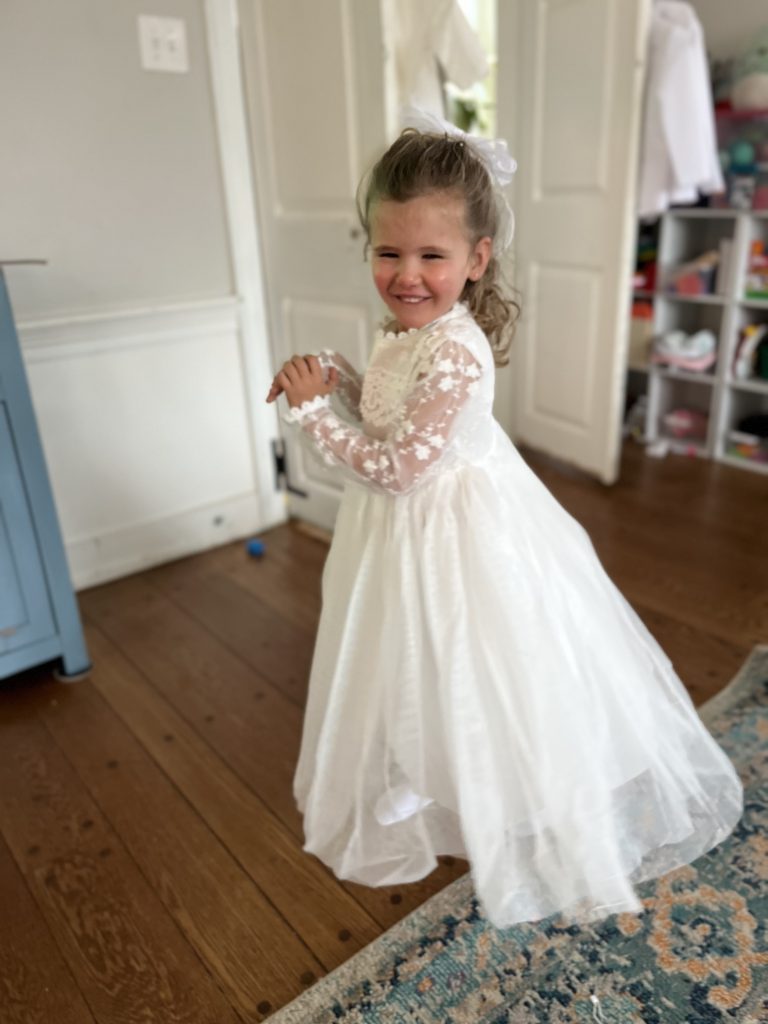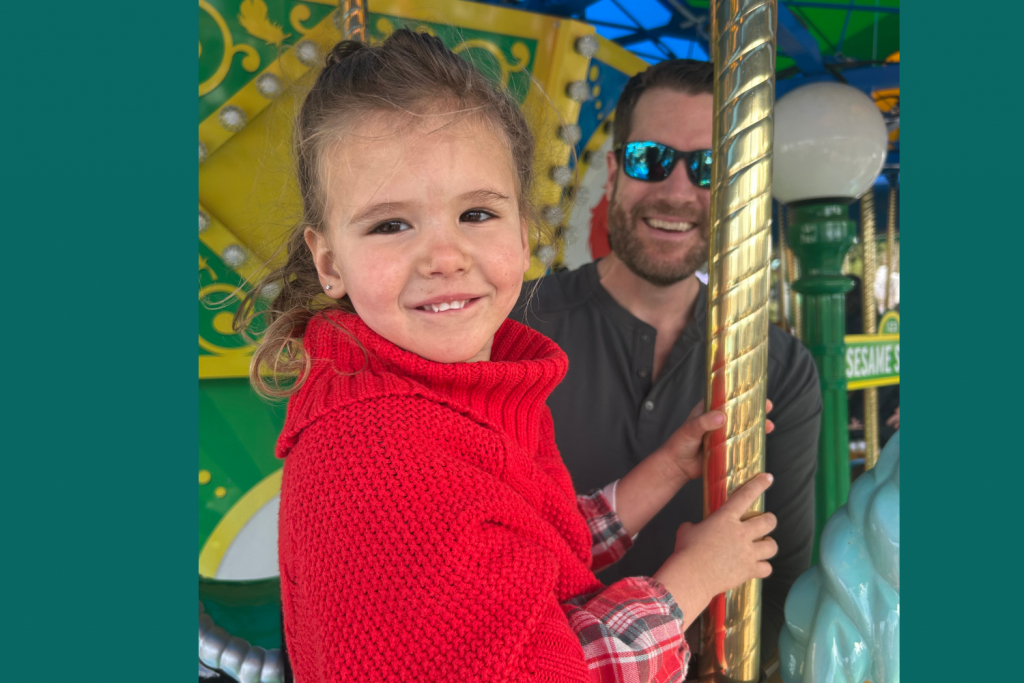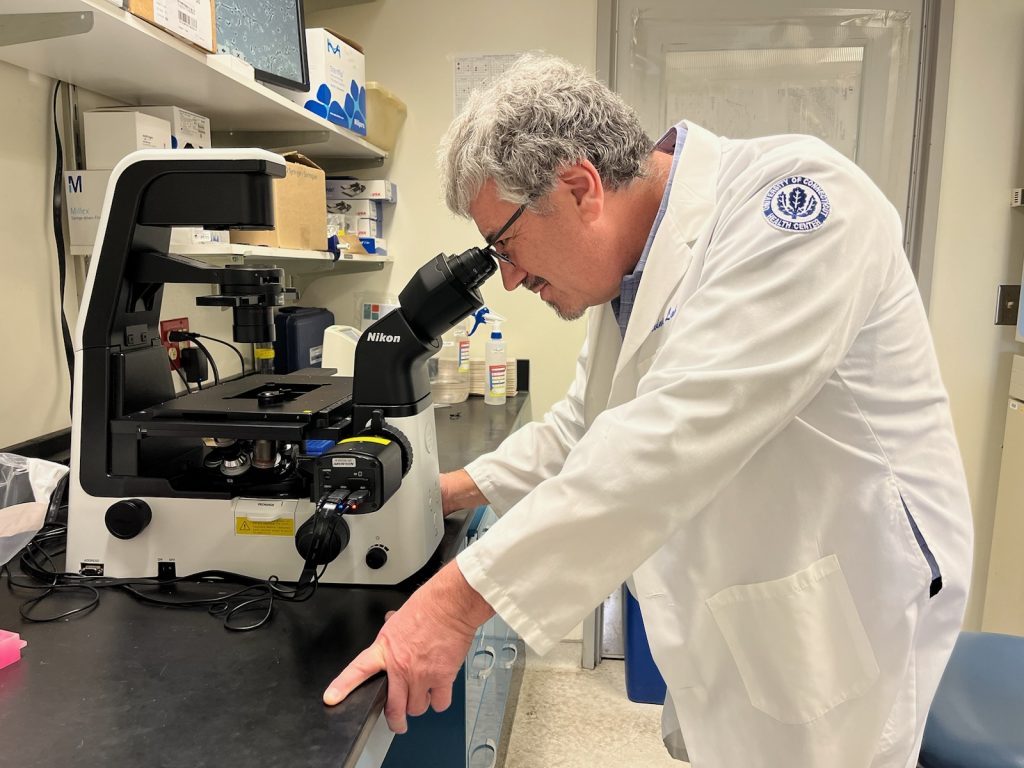This World Autism Awareness Day a Proud Mom Celebrates Her Young Daughter’s Advancement of Science
“I celebrate her,” heartwarmingly shares Mom Jacqueline Vanderhoof this World Autism Awareness Day on April 2 about the amazing difference her daughter Fiona, 4, is already making in the world to advance scientific knowledge and a potential new treatment for those with autism spectrum disorders, especially profound autism like hers.

As a baby Fiona was diagnosed with a genetic condition that causes profound autism known as Dup15q Syndrome.
“We noticed Fiona wasn’t holding her head up like an infant should and she started doing some weird involuntary movements of her arms and shuttering. We called the pediatrician, and to them it seemed like she was having seizures. We took her down to the ER and ultimately, she was diagnosed with epilepsy. But as part of that journey, we did genetic testing.”
Her mother says Fiona’s medical journey speaks volumes of the vital importance of doing follow-up genetic testing to catch a possible diagnosis and to inform a child’s care.
“The genetic testing came back right away that she has what’s called Dup15q syndrome, she basically has an extra chromosome, similar to Down syndrome, so she has an extra piece of her fifteenth chromosome. Through that journey we learned the disorder causes autism among other symptoms,” shared Vanderhoof.
Due to the genetic condition of Dup15q, Fiona is very significantly developmentally delayed. Also, her verbal communication is very challenged as well as her understanding of spoken language.
“But the very good news is she says a few words now, and we never thought that could happen! We also didn’t know if she would ever walk, but she does now! She’s very active and it’s really great!” Mom happily reports. Also, Fiona’s repetitive seizures are now under control, and she’s been weaned off her epilepsy medication. But her mother says it’s a waiting game to see if the seizures ever come back.
“The unknown is very hard,” stresses Mom. “But thanks to Fiona’s shared cells we’re so close to finding a new genetic therapeutic to help her and others with autism,” Mom happily shares.
Research at UConn School of Medicine was recently awarded funding in February by the Eagles Autism Foundation and UConn’s research findings could directly impact Fiona’s future.

After Fiona’s diagnosis Vanderhoof became a self-proclaimed “science nerd” to find more answers and to help more kids with autism.
“I had a mobile phlebotomist come to the house and take Fiona’s blood samples to create specialized cells in a lab in California so they could be shared with scientists for further study,” Vanderhoof says.
“I made cell lines and had them shipped to UConn for research after contacting Dr. Eric Levine’s Lab,” Vanderhoof said. “I now talk to Dr. Levine and his UConn team, and they say, ‘I’m working on Fiona’s cells’ or ‘we used Fiona’s cells today for this and that.’ I’m so glad they are putting her cells to good use! Anything we can do to help autism!”
“It’s a hope, but soon a reality, we are going to have a gene therapy in the next few years. That’s really exciting!” Vanderhoof exclaims. “Our biggest hope is to improve the quality of life for these kids like Fiona.”
“We love the Philadelphia Eagles,” says Vanderhoof whose family lives in Philadelphia and are now championing the growing grant funding awarded by the organization for the study of autism and future treatments. “This past year they were able to fund two different Dup15q syndrome researchers a total of $800,000 which is fantastic!”
For Fiona’s Dup15q genetic disorder the Eagles Autism Foundation grant is funding UConn and Levine’s research looking into the genetic makeup of that extra piece of chromosome.
 “The fact that this UConn researcher is looking into that really gives me hope that in her lifetime there will be a therapeutic that will help her. I am not looking for a cure and not looking to fix Fiona. We love her,” says Vanderhoof. “That all gives me a lot of hope for kids like Fiona that have the same syndrome. One of the big things that is concerning with her Dup15q syndrome are the seizures and what that can do for her quality of life and what that does to her development.”
“The fact that this UConn researcher is looking into that really gives me hope that in her lifetime there will be a therapeutic that will help her. I am not looking for a cure and not looking to fix Fiona. We love her,” says Vanderhoof. “That all gives me a lot of hope for kids like Fiona that have the same syndrome. One of the big things that is concerning with her Dup15q syndrome are the seizures and what that can do for her quality of life and what that does to her development.”
And this World Autism Awareness Day and every day, Fiona’s mom wishes for one thing.
“It’s so important that rare and profound autism stays top of mind too. Don’t lose sight of these kids and their challenges. They are so special!”
The cutting-edge autism research of UConn Neuroscientist Levine and his lab won $400,000 in research funds thanks to football fans donating to the annual Eagles Autism Challenge. His NIH federally-funded lab’s work explores autism’s genomic genesis and identifying genetic pathways that may cause autism spectrum disorders and better ways to study them. His team has been studying the two rare, genetic disease syndromes that also result in profound autism, Dup15q Syndrome and Angelman Syndrome. They impact about 1 in 5,000 children.
While it still is not clear yet scientifically about autism spectrum disorders’ genetic origins, it is known that both of these autism-linked syndromes are connected to a child’s genetic differences that lead to a missing piece of a chromosome (Angelman Syndrome) or chromosomal duplication (Dup15q Syndrome) in the same 15q11-q13 region.
Levine’s innovative autism research at UConn is reprogramming the donated skin or blood cells of patients like Fiona to develop them in the lab into brain cells that exactly mirror each patient’s genomics for further study.
 “This is really unique, personalized medicine, and a better way for us to study the genomics and physiology of a real child’s brain cells and the possible role multiple genes may be playing leading to autism. All kids are different. We can analyze the physical structure of their neurons, measure intracellular calcium dynamics, and record functional electrical activity,” says Levine, is grateful to have received donations of cells from families for study like the Vanderhoof’s. “It’s very exciting to pivot our autism research to translational research studying actual patient-derived human neurons.”
“This is really unique, personalized medicine, and a better way for us to study the genomics and physiology of a real child’s brain cells and the possible role multiple genes may be playing leading to autism. All kids are different. We can analyze the physical structure of their neurons, measure intracellular calcium dynamics, and record functional electrical activity,” says Levine, is grateful to have received donations of cells from families for study like the Vanderhoof’s. “It’s very exciting to pivot our autism research to translational research studying actual patient-derived human neurons.”
In his translational research efforts, Levine hopes to compare neurons of patients and identify what role various genes play in the brain cells of the patients with syndromes also causing autism, and how their brain cells behave differently, and even test what possible current drugs or new drugs might be beneficial to patients to improve both their symptoms and quality of life.
“There is so much to learn about the brain,” says NIH-funded Levine, whose work as a neuroscientist every day is driven by his fierce curiosity to learn more and more about how the brain works, and also inspired by the autism patients and families he has had the privilege to meet like the Vanderhoof family.

“The families I have met are so grateful for our autism research efforts, and more hope is on the way. It is a very exciting time for autism research and real, tangible progress and results with research advances and drug clinical trials,” says Levine. “Our focus at UConn is finding the next generation of therapies,” says Levine, whose ultimate goal for his autism research is exploring the future power of gene testing and gene therapy for autism spectrum disorders and related-syndromes, including very early-on in life whether in-utero or during a young child’s life.
“If we can better understand the common pathway in the brain for these two genetic syndromes that lead to autism, we may someday understand other forms of autism, especially what causes behavioral issues such as loss of verbal communication, cognitive deficits, and impaired motor-function skills,” says Levine.
The University of Connecticut thanks and celebrates you, Fiona!
Latest UConn Today
- CASE at UConn Stamford Opens to FanfareCASE is a vibrant new hub designed to support students and brings essential resources in one place
- UConn Firsts: The First Student Housing for WomenDorms, classrooms, and basketball all under one roof
- Meals4Moms: UConn, CT Small Business Develop Program to Support Gestational Diabetes ManagementGestational diabetes impacts 2 to 10% of U.S. pregnancies, and about 50% of patients with GDM will develop Type 2 diabetes
- UConn Students Meet with Wall Street Leaders'There are a million people out there who want to help you. It may not feel like it. But they do—especially people from UConn'
- UConn Waterbury’s Neurovariability Initiative: Where Cognitive Strengths Fuel Learning for AllRethinking education through strength, science, and innovation
- Developing a Clearer Understanding of Permafrost Thaw Risk in AlaskaIf you want to fully understand risk and prepare for hazards, you need to have the full picture













